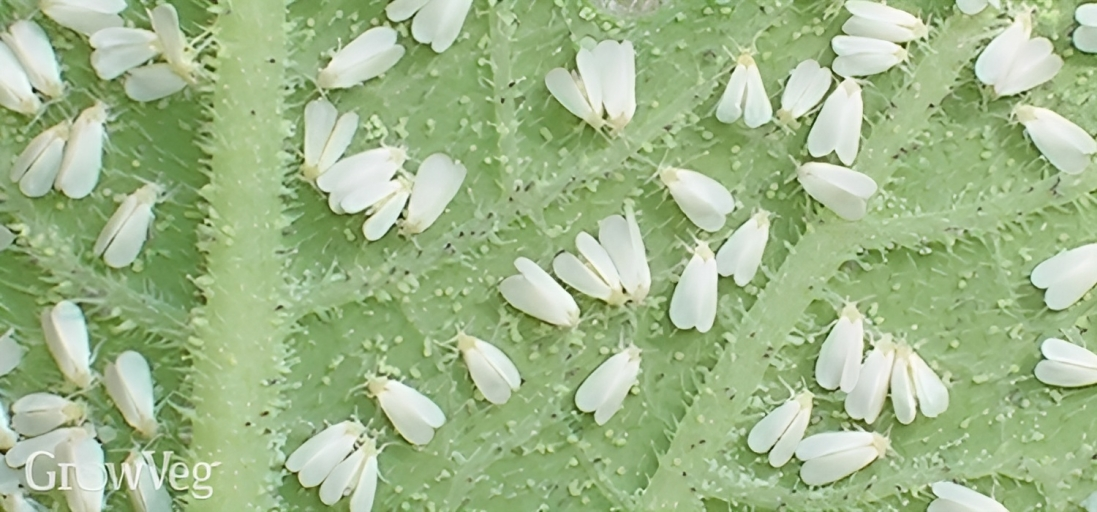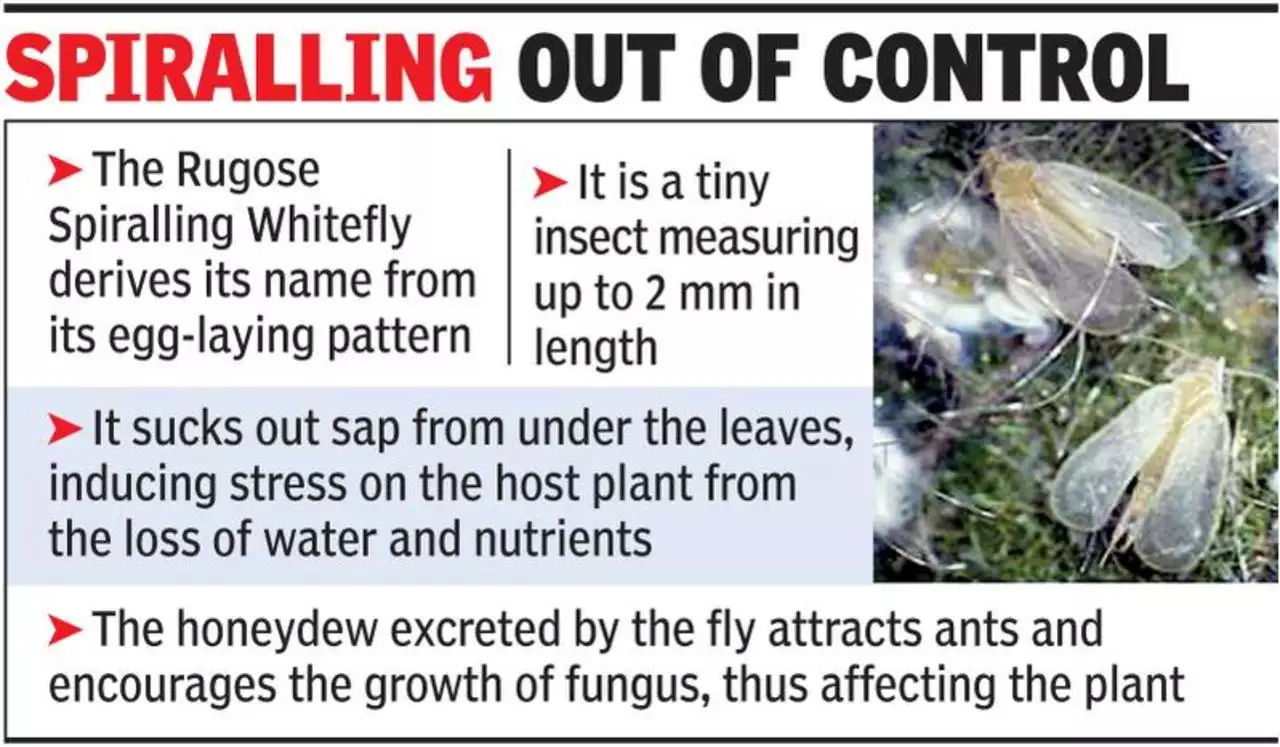Description

Copyright infringement not intended
Context: Recently, ‘Rugose Spiralling Whitefly’ – an invasive insect which attacks palms, coconut and banana trees among others – has been spotted in Pune city. The pest not only affects the productivity of coconut trees, it also impacts the nutritional value of the fruit.
Details
- Rugose spiralling whitefly (RSW) is a serious pest of ornamental and fruit plants that can cause significant damage and yield loss.
- RSW is difficult to control because of its high reproductive rate, wide host range, and resistance to some insecticides. Moreover, RSW can spread rapidly through wind or human-mediated transport of infested plants.
Rugose spiralling whitefly (RSW)
About
- Rugose Spiralling Whitefly (RSW) is a species of whitefly that belongs to the family Aleyrodidae.
- It is native to Central America and the Caribbean but has spread to other regions of the world, such as Florida, Hawaii, Africa and Asia.
- It was first reported in India in 2016, in Kerala, and has since been detected in Tamil Nadu, Karnataka and Maharashtra.
Features
- RSW is a small, white insect that measures about 1-2 mm in length.
- It has piercing-sucking mouthparts that allow it to feed on the sap of plants.
- It lays eggs in a spiral pattern on the underside of leaves, forming white waxy deposits. The eggs hatch into nymphs, which are flat and scale-like, and feed on the plant tissues.
- The nymphs secrete honeydew, a sticky substance that attracts ants and other insects, and promotes the growth of sooty mould, a black fungus that reduces photosynthesis.

Concerns
- RSW is a serious pest of many economically important crops, such as coconut, banana, palm, mango, guava, papaya and citrus. It causes direct damage by sucking the sap and reducing the vigour of the plants.
- It causes indirect damage by inducing sooty mould growth and facilitating the transmission of viral diseases.
- It can reduce the yield and quality of coconut by affecting the size, weight and oil content of the nuts.
- It can affect the taste and appearance of bananas and other fruits.
- RSW has high reproductive potential and rapid dispersal ability. A female RSW can lay up to 200 eggs in her lifetime, and the eggs can hatch within 5-7 days.
- The adults can fly long distances with the help of wind currents and infest new areas.
- It can feed on more than 60 plant species from 23 families, making it difficult to control by crop rotation or host plant resistance.
- It has developed resistance to several insecticides due to their indiscriminate use and over-reliance.
RSW requires an integrated pest management (IPM) approach that combines various methods of control, such as cultural, biological, mechanical and chemical.
Some of the IPM practices that can be adopted are:
- Monitoring and scouting: Regularly inspecting the crops for signs of infestation and taking action before it becomes severe.
- Sanitation: Removing and destroying infested plant parts and debris to reduce the source of inoculum and breeding sites.
- Pruning: Pruning the lower leaves of coconut trees to expose the whiteflies to natural enemies and sunlight.
- Mulching: Covering the soil with organic matter to conserve moisture and suppress weed growth.
- Biological control: Using natural enemies such as parasitoids, predators and pathogens to reduce the population of whiteflies. Some examples are Coccinella septempunctata (predators) and Beauveria bassiana (fungus).
- Mechanical control: Using yellow sticky traps or water jets to trap or dislodge the whiteflies from the plants.
- Chemical control: Using selective or botanical insecticides as a last resort when other methods fail or are not feasible. Some examples are neem oil, azadirachtin, pyrethrum and spinosad

Conclusion
- RSW is a threat to the livelihoods of farmers and the food security of consumers. It requires urgent attention and action from all stakeholders involved in crop production and protection. By adopting IPM practices, we can minimize the damage caused by this pest and ensure sustainable agriculture.
|
PRACTICE QUESTION
Q. What is the common symptom of damage caused by Rugose spiralling whitefly on host plants?
A) Leaf curling and yellowing
B) Leaf mining and skeletonization
C) Sooty mould growth and honeydew secretion
D) Gall formation and leaf distortion
Answer: C
|
https://www.hindustantimes.com/cities/pune-news/invasive-rugose-spiralling-whitefly-threatens-coconut-trees-in-pune-india-101687803748722.html















